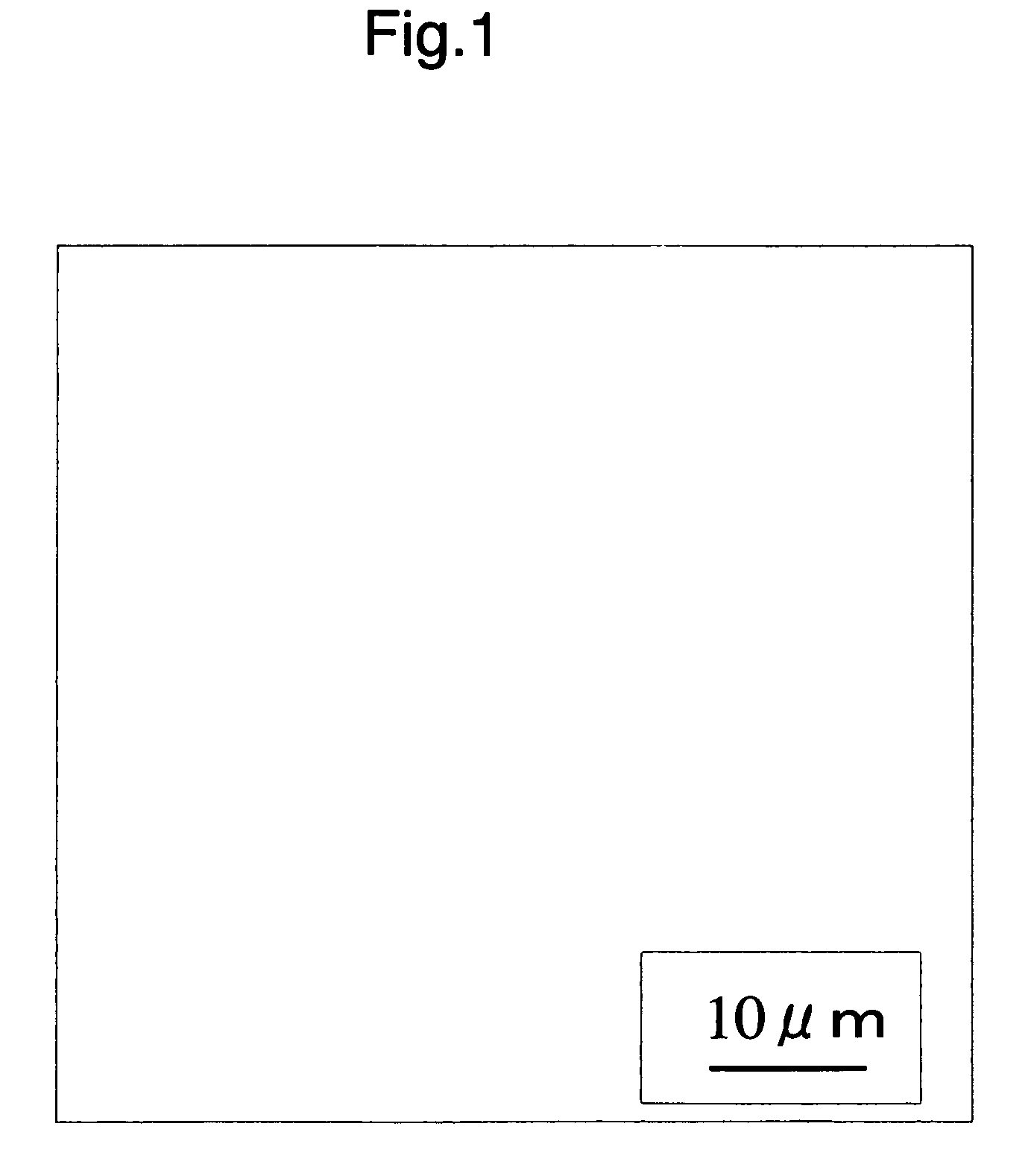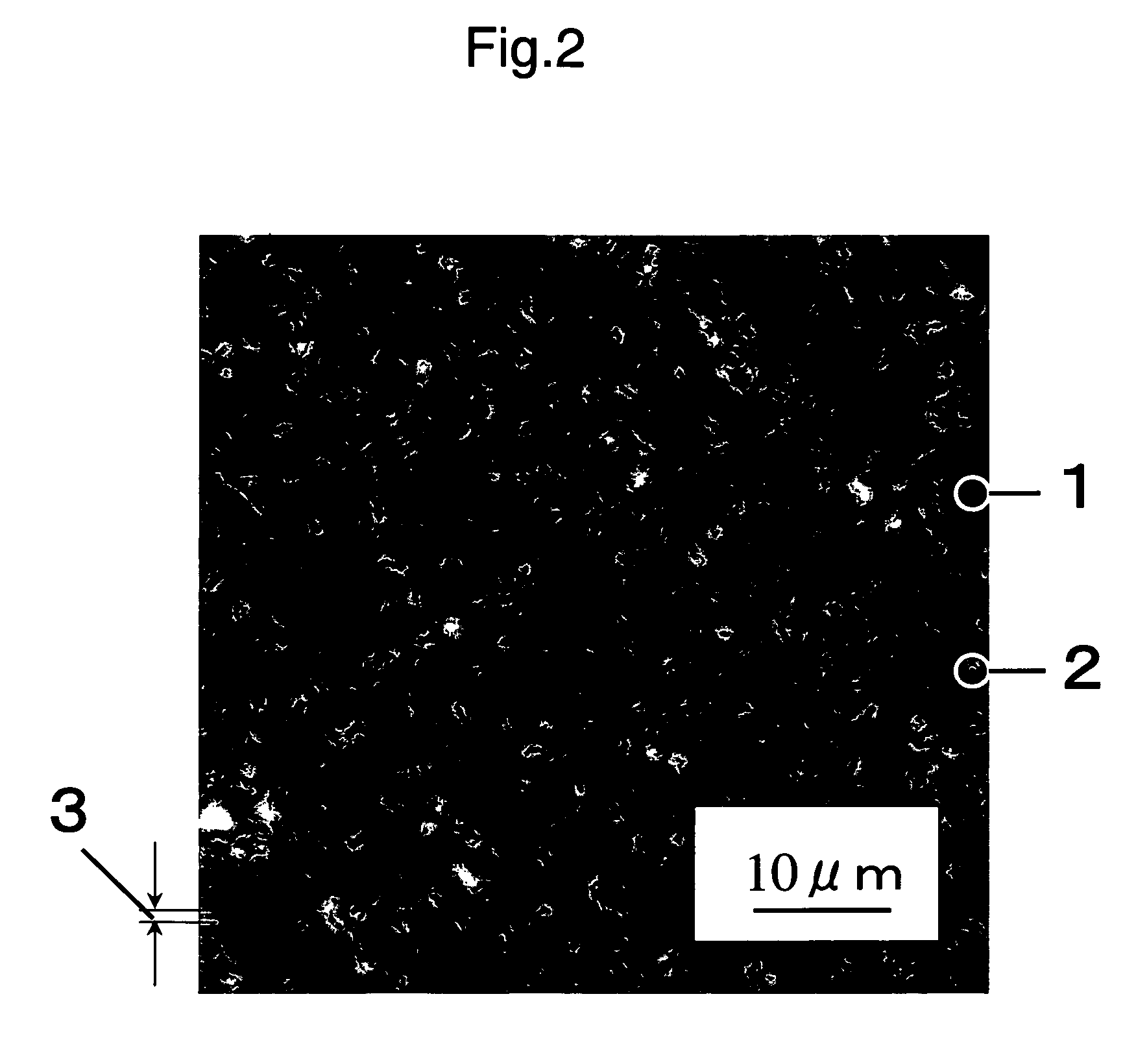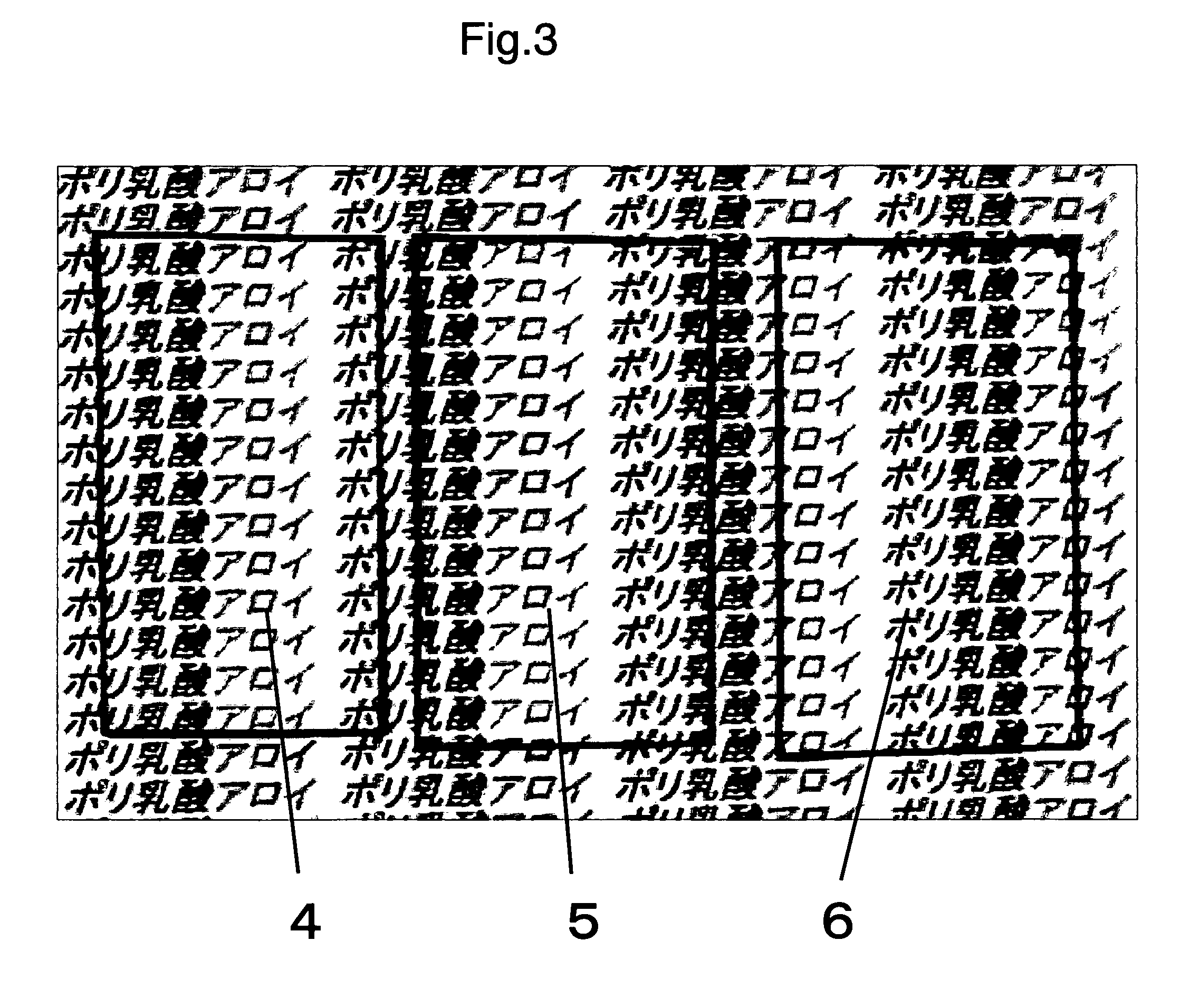Polylactic acid resin composition, process for producing the same, biaxially stretched polylactic acid film, and molded articles thereof
a polylactic acid resin and polymer technology, applied in the direction of emulsion paints, coatings, etc., can solve the problems of slow crystallization speed of polylactic acid, limited crystallization and use of molded articles, and serious problems for practical use, and achieve excellent thermostability and compatibility or affinity. excellent
- Summary
- Abstract
- Description
- Claims
- Application Information
AI Technical Summary
Benefits of technology
Problems solved by technology
Method used
Image
Examples
examples
[0094]The compositions, films and methods will be described more in detail with reference to Examples.
[Evaluation Methods]
(1) Weight average molecular weight of poly(lactic acid)
[0095]The measurement was carried out using PMMA as standards and chloroform solvent at a column temperature of 40° C. by Warters 2690 manufactured Japan Warters. Inc.
(2) Substitution Degree of Cellulosic Ester
[0096]The measurement was carried out by adding 2N NaOH 40 ml to a sample 0.3 g, carrying out alkali-hydrolyzation at 70° C.×2 hours, neutralizing the solution by adding 1N HCl 80 ml, quantitatively determining esterification agent amount by high performance chromatography, and calculating the substitution degree per glucose unit.
(3) Glass Transition Temperature of Resin Composition
[0097]The glass transition temperature of the resin composition was calculated by measurement for a sample 5 mg at 20° C. / min temperature increasing speed after keeping the sample at −30° C. for 5 minutes in nitrogen atmosph...
examples 1 to 7
[0119]The raw materials of compositions shown in Table 1 were supplied to a biaxial extruder (PCM-30, manufactured by Ikegai Kogyo Co., Ltd.) set at an extrusion temperature of 210° C. and guts discharged out of dies were immediately quenched in ice water to fix the structures and then pelletized. The obtained pallets were all transparent.
[0120]With respect to the samples cut out of the pellets, the resin compositions were subjected to glass transition temperature measurement. The results are shown in Table 1.
[0121]Specimens with 100 μm thickness were cut out of the pellets and re-melted on a hot stage set at 210° C. and the structures measured by a phase-contrast microscope at that time and the results are shown in Table 1.
[0122]Practically, the results are as shown in FIG. 1 and FIG. 2. In FIG. 1 showing the dispersion state of the respective components of the composition of Example 1, no structure was observed and in FIG. 2 showing the dispersion state of the respective component...
examples 8 to 15
[0127]The sheets were drawn at a preheating temperature of 90° C. in the longitudinal direction at magnifications-shown in Table 2 and drawn at a preheating temperature of 78° C. in the transverse direction at magnifications shown in Table 2 to adjust the thickness to be 80 μm and then the sheets were thermally treated at 140° C. for 10 seconds to obtain biaxially drawn films. The film characteristics of the obtained films were shown in Table 2.
[0128]Each biaxially drawn film was cut into 50 mm×10 mm (length×width) and drawn to be 2 times as long in longitudinal direction at 80° C. preheating to obtain a molded article. After that, without applying force such as the tensile force or load from the outside, the film was put in a hot air oven set at a temperature of 80° C. for 2 minutes to observe the thermal deformation (thermal shrinkage) before and after loading. The results are shown in Table 2. The occurrence of thermal deformation of each molded article was determined by the foll...
PUM
| Property | Measurement | Unit |
|---|---|---|
| degree of crystallinity | aaaaa | aaaaa |
| thickness | aaaaa | aaaaa |
| glass transition temperature | aaaaa | aaaaa |
Abstract
Description
Claims
Application Information
 Login to View More
Login to View More - R&D
- Intellectual Property
- Life Sciences
- Materials
- Tech Scout
- Unparalleled Data Quality
- Higher Quality Content
- 60% Fewer Hallucinations
Browse by: Latest US Patents, China's latest patents, Technical Efficacy Thesaurus, Application Domain, Technology Topic, Popular Technical Reports.
© 2025 PatSnap. All rights reserved.Legal|Privacy policy|Modern Slavery Act Transparency Statement|Sitemap|About US| Contact US: help@patsnap.com



